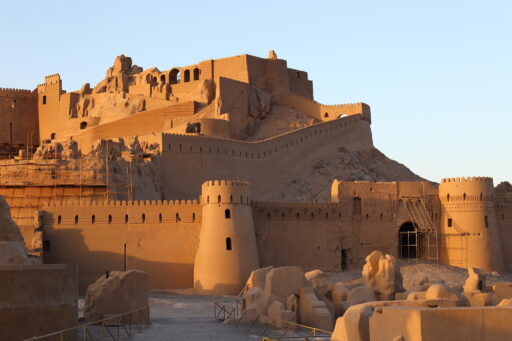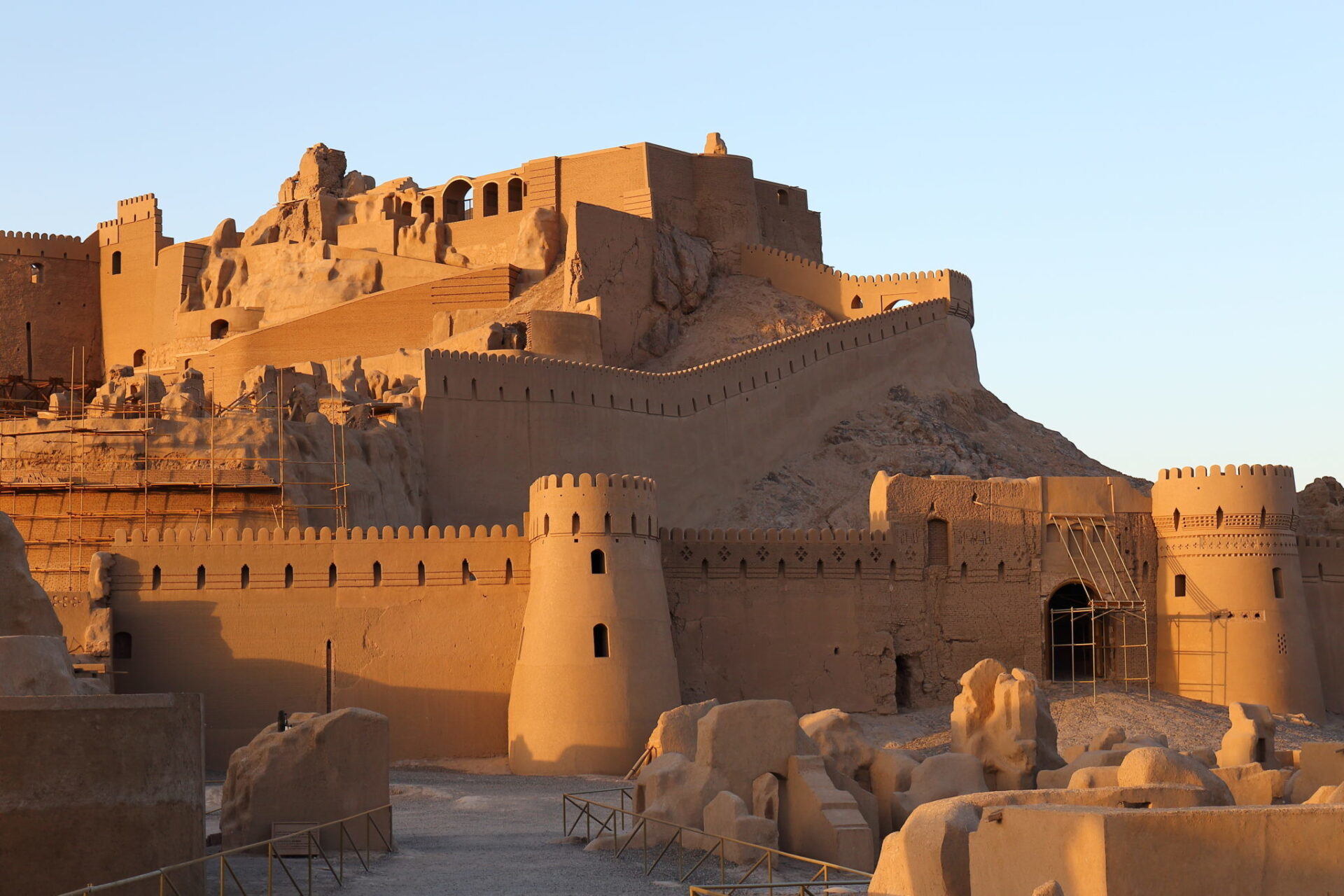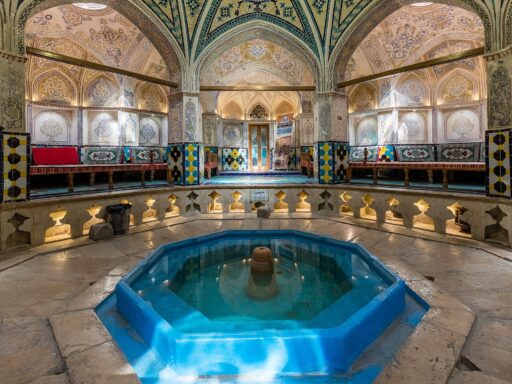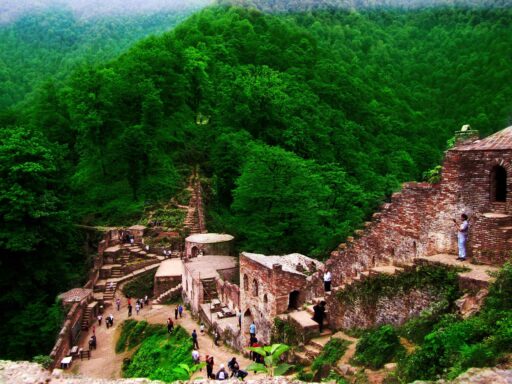Located in the Kerman province in southeastern Iran, Arg-e Bam is the largest adobe building in the world. This magnificent ancient citadel has stood proudly in the desert city of Bam for over 2,000 years, impressing all who visit with its immense size and intricate decorative designs.
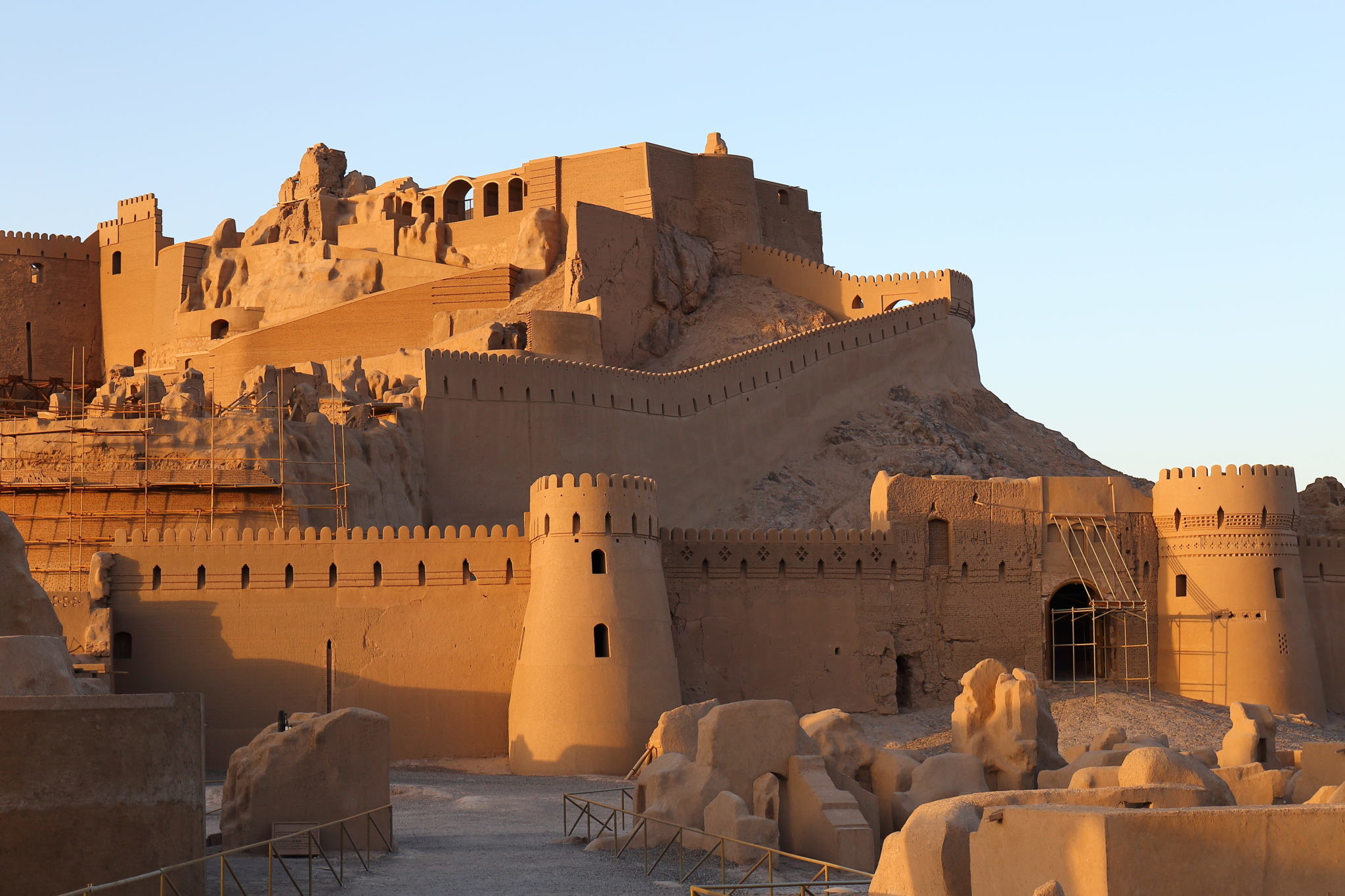
History and Significance of Arg-e Bam
Arg-e Bam has a long and illustrious history. It was built around 500 BC, first as a defensive structure to help control trade routes through the area. Over centuries it was expanded and beautified, becoming a stunning monument to Persian ingenuity and artistry.
At its peak in the 7th to 11th centuries AD, Bam was one of the most important Silk Road cities. Its location on the trade route between India, Asia, and Europe enabled it to grow wealthy from commerce. The citadel was well-fortified, with 38 watchtowers and walls 6-7 meters high, protecting the oasis town that grew up around it.
Arg-e Bam had many functions over its long lifespan. It served as a market, a barracks, and the governor’s quarters. But most of all, it was a hub of culture and art. Exquisite decorations were added over the years, making Arg-e Bam an aesthetic masterpiece as well as a fortress.
UNESCO recognized the global significance of the citadel by making it a World Heritage Site in 2004. This placed Arg-e Bam alongside other wonders like the Great Wall of China and Machu Picchu as an irreplaceable treasure of human civilization.
Tragically, a devastating earthquake struck the region in 2003, causing the complete collapse of the citadel’s mud brick roof. However, the imposing exterior walls largely remained intact due to their special construction, leaving the grandeur and layout of Arg-e Bam still appreciable.
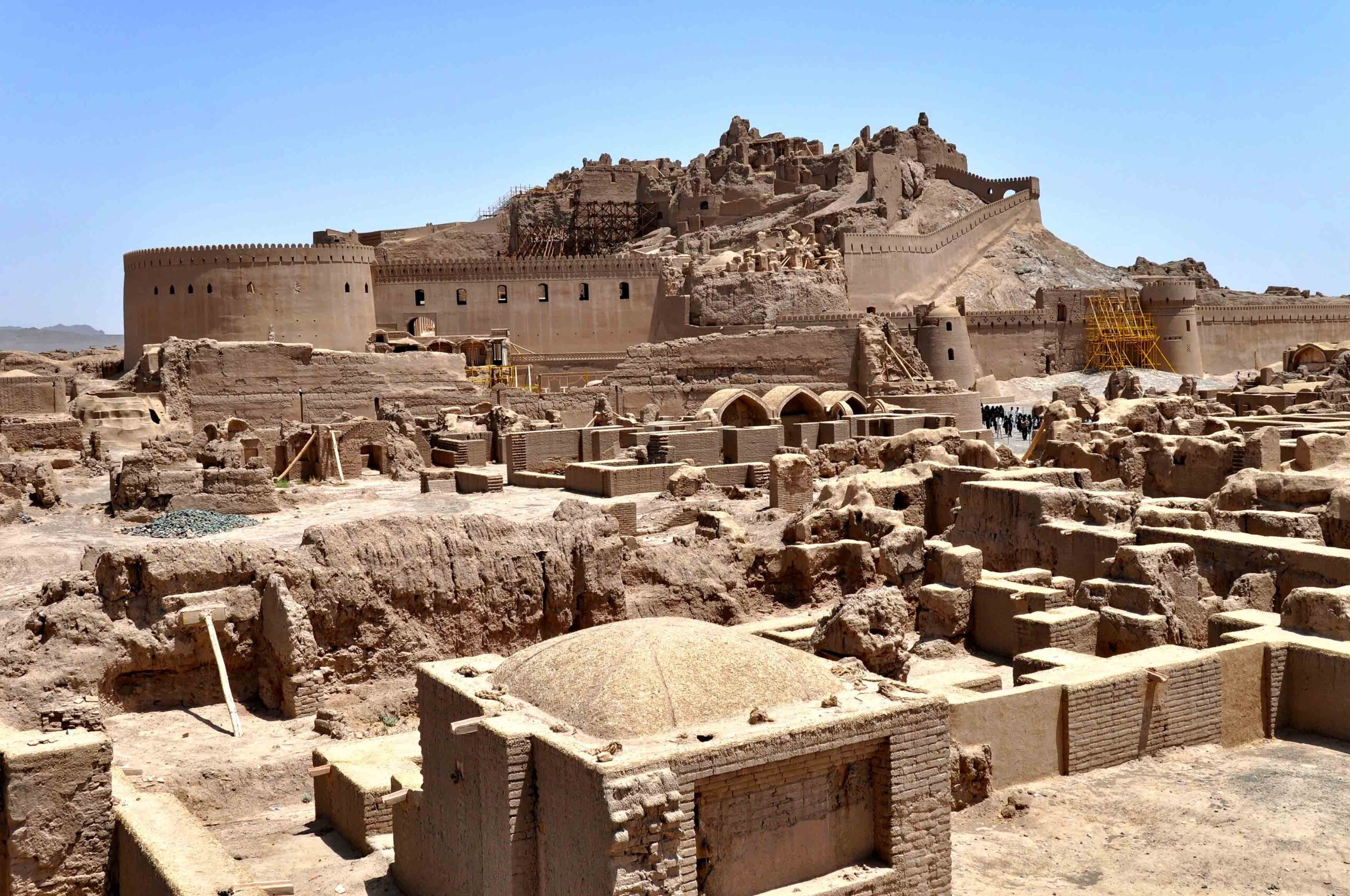
Layout and Architecture of the Citadel
In its prime, Arg-e Bam was the largest adobe building in the world. It covered an area of around 180,000 square meters! To explore this vast mud brick citadel, visitors entered through the remnants of what was once a very imposing doorway arch.
Inside the outer walls, the citadel was divided into various sections for housing, storage, and other uses. The central area housed the governor’s quarters and summer palace, filled with intricate decorative flourishes. There were also stables, a mosque, and a caravanserai for weary travelers along the Silk Road.
Surrounding the central area was a warren of residences and shops protected by the exterior walls. People of all social classes lived and worked side-by-side in these structures. The artisans were renowned for fine silk and cotton textiles, metalwork, and masonry.
The various sections of Arg-e Bam utilized different architectural techniques. The exterior walls were specially engineered to withstand attacks, using various materials and building in buttresses for strength. Interior walls enclosing the center were thinner, allowing for second-story covered balconies and stucco decorations. Housing areas featured labyrinthine lanes and alleys between homes.
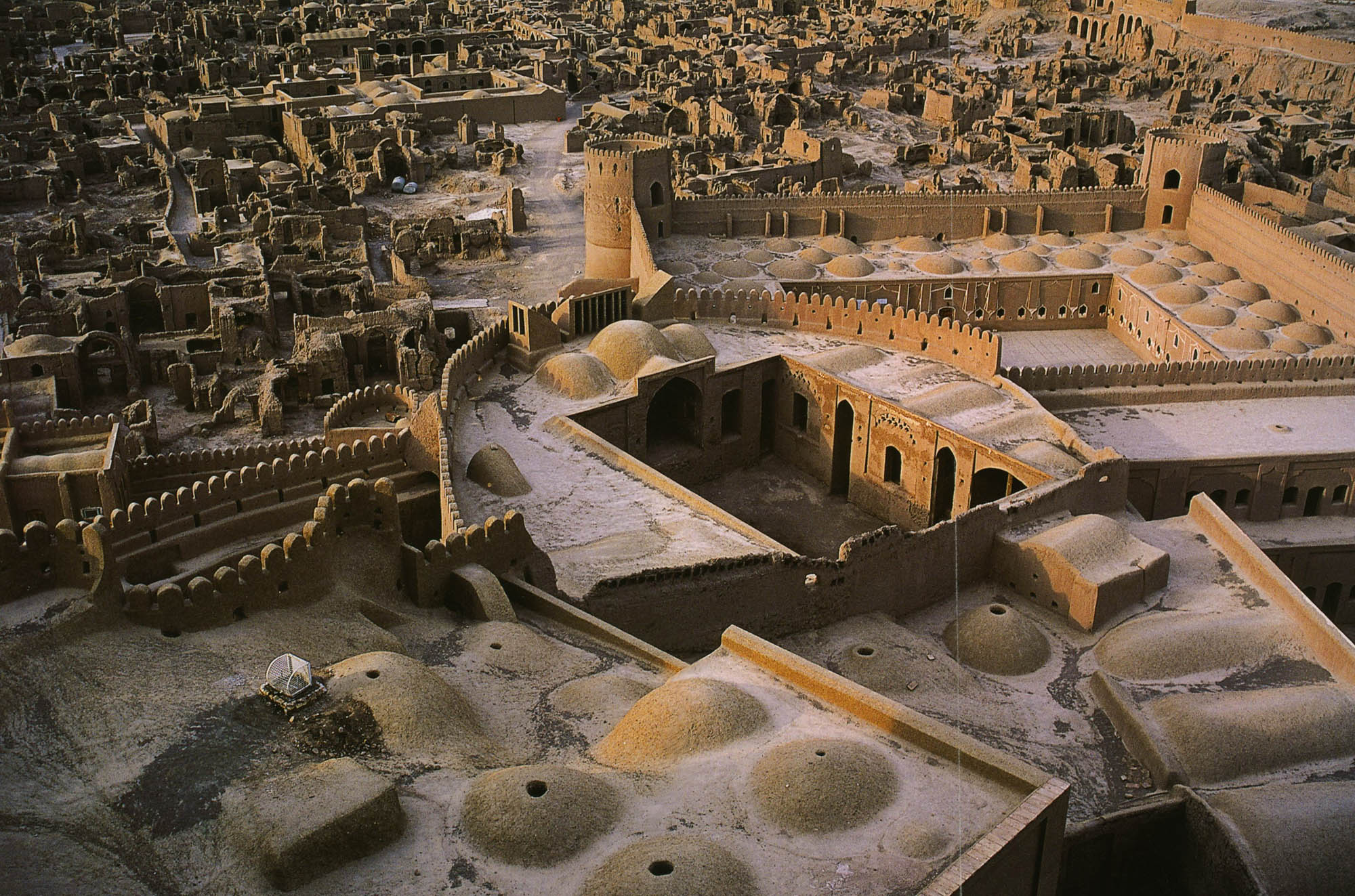
Brickwork and Decorative Motifs
While the immense scale of Arg-e Bam is sure to impress visitors, it is the intricate details that make this ancient citadel so magnificent. Every inch of the inhabited parts of Arg-e Bam were decorated with beautiful brickwork patterns and motifs.
Geometric shapes feature heavily in the intricate brickwork designs. There are complex arrangements of squares, rectangles, triangles, and octagons, layered in eye-catching patterns across facades and surfaces. Decorative recessed brickwork arches are also a notable decorative feature of Arg-e Bam.
Another signature decorative element is the iconic yellow bundled straw sticks that protrude from many of the walls and structures. This was done both for aesthetic reasons and to aid stability and reinforce the mud brick construction.
Stylized floral designs also embellish parts of the ancient citadel. Lotus flowers and palm leaves are common motifs. Mosaics made of colorful glass adorned some walls and elevated buildings. The governor’s quarters were particularly elaborate, with vibrant vertical striped bands and artistic reliefs throughout.
Many decorative elements of Arg-e Bam incorporated traditional Iranian and Islamic influences. There is exquisite Kufic script carving and abundant geometric shapes, along with arches inspired by Persian and middle eastern architecture. These artistic flourishes enriched the citadel as a center of culture on the Silk Road trade route.
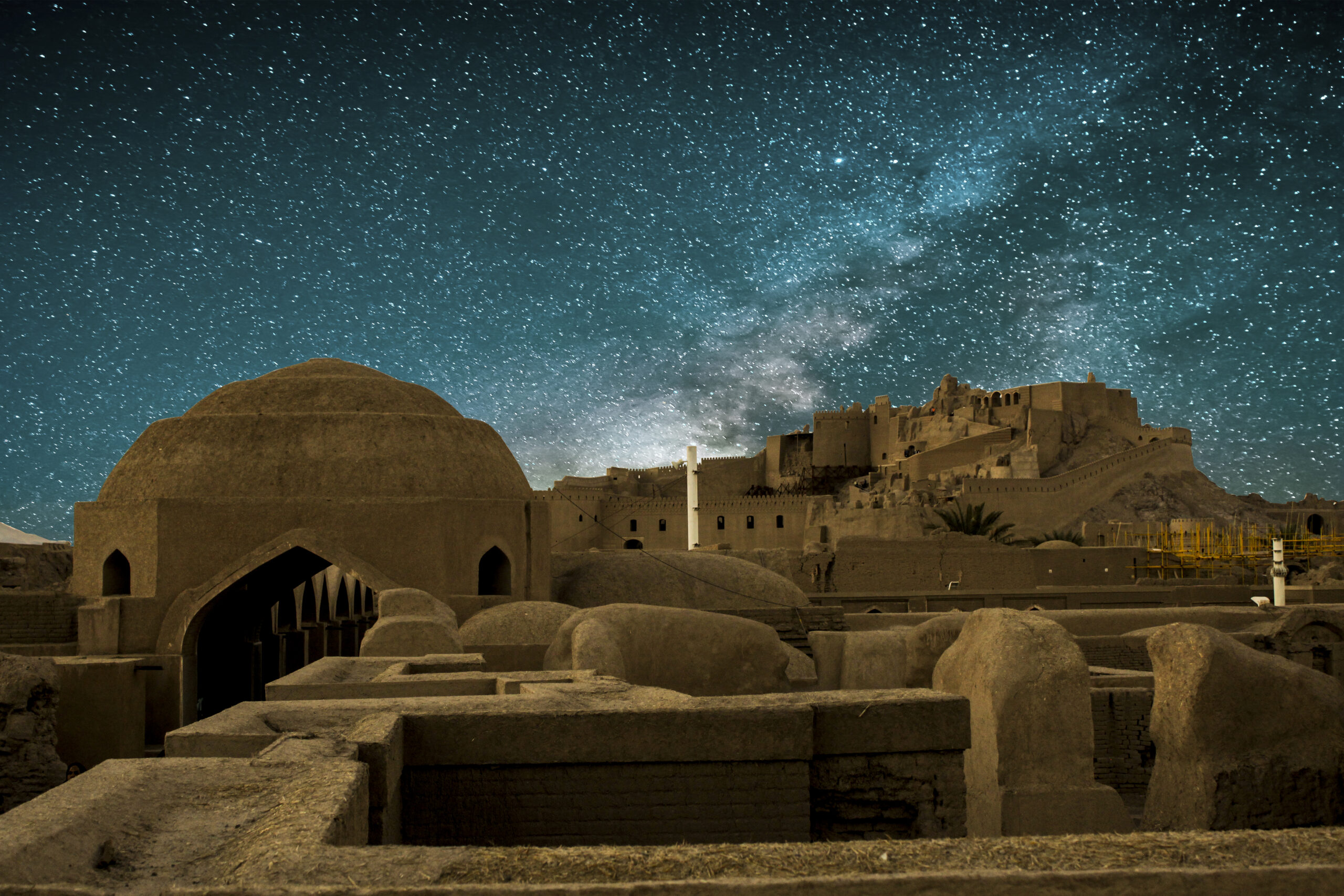
Bam After the Earthquake
As mentioned previously, in 2003 a catastrophic earthquake struck Bam, causing around 70% of the Arg-e Bam citadel to collapse. Tens of thousands of lives were tragically lost in this disaster and the surrounding city of Bam was utterly destroyed.
In the years since, painstaking work has been done to stabilize and restore parts of the ancient citadel. Scaffolding was erected to reinforce vulnerable areas, and fallen bricks cleared away. However, much of Arg-e Bam is being conserved as is, left in its ruined state to educate future generations. Some decorated walls have even been partially rebuilt for posterity.
The earthquake damage does not detract from the magnificence of Arg-e Bam. Visitors are still able to explore the exterior walls and chambers, appreciate the grand layout and get a sense of its former glory. Interpretive signs also help explain each area and highlight what once stood there.
For many Iranians, and people worldwide, the ruined Arg-e Bam serves as a reminder of the fragility of human life and constructs. This ancient citadel survived for over 2,000 years before nature devastated it in mere minutes. Yet it will continue teaching lessons for centuries to come in its extraordinary ruined state.
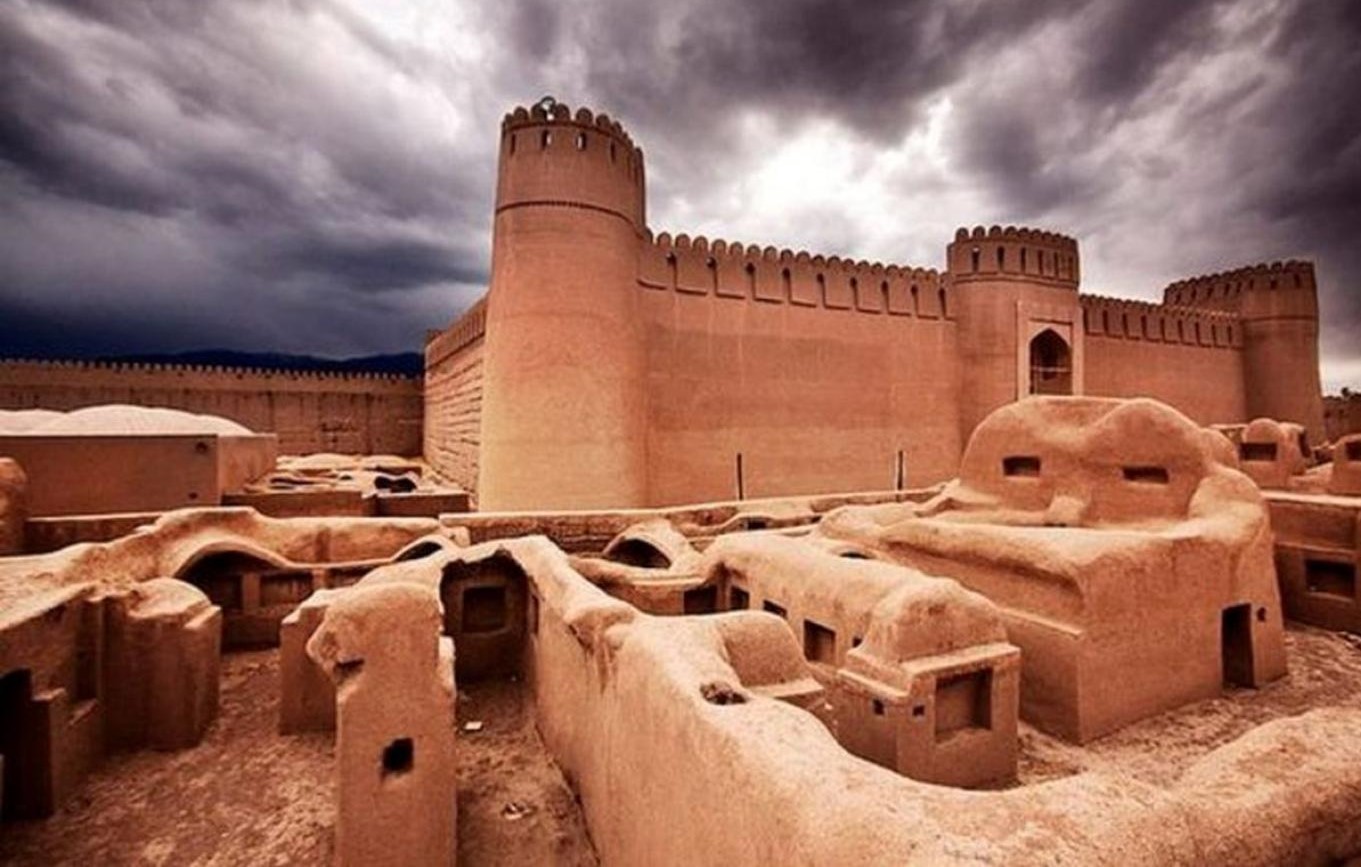
Visiting the Citadel Today
Arg-e Bam is one of Iran’s most popular tourist attractions, drawing visitors from around Iran and the world. It sits on the edge of the modern city of Bam, which is slowly being rebuilt after the earthquake’s destruction.
The site is open year-round. The cool winter months from October to March are peak tourist season due to the sweltering desert summers. Visitors can explore the interior of the citadel through a series of cleared paths winding through the ruins. Interpretive signs explain what various areas once were and highlight unique architectural details.
The Museum of Arg-e Bam is also worth a visit. It lies just outside the citadel walls and provides an excellent overview of the site through artifacts, timelines and explanations of architectural techniques. This helps prime visitors before they enter the citadel itself.
No trip to Bam is complete without viewing the citadel from outside at night. When Arg-e Bam is artfully illuminated, its imposing mud brick walls glow against the black desert sky. The arched entrance doorway looks particularly impressive. Night visits leave a lasting impression and beautiful photos.
Exploring Arg-e Bam is a step back in time, revealing the ingenuity of ancient Persians through surviving architectural marvels. This magnificent ruined citadel has endured earthquakes, wars, and the march of time over millennia. Arg-e Bam stands today not just as Iran’s largest adobe structure, but as a symbol of human endurance and artistry through the ages.


